If Your Body Can Handle These 6 Tests, You’re Aging Like a Pro
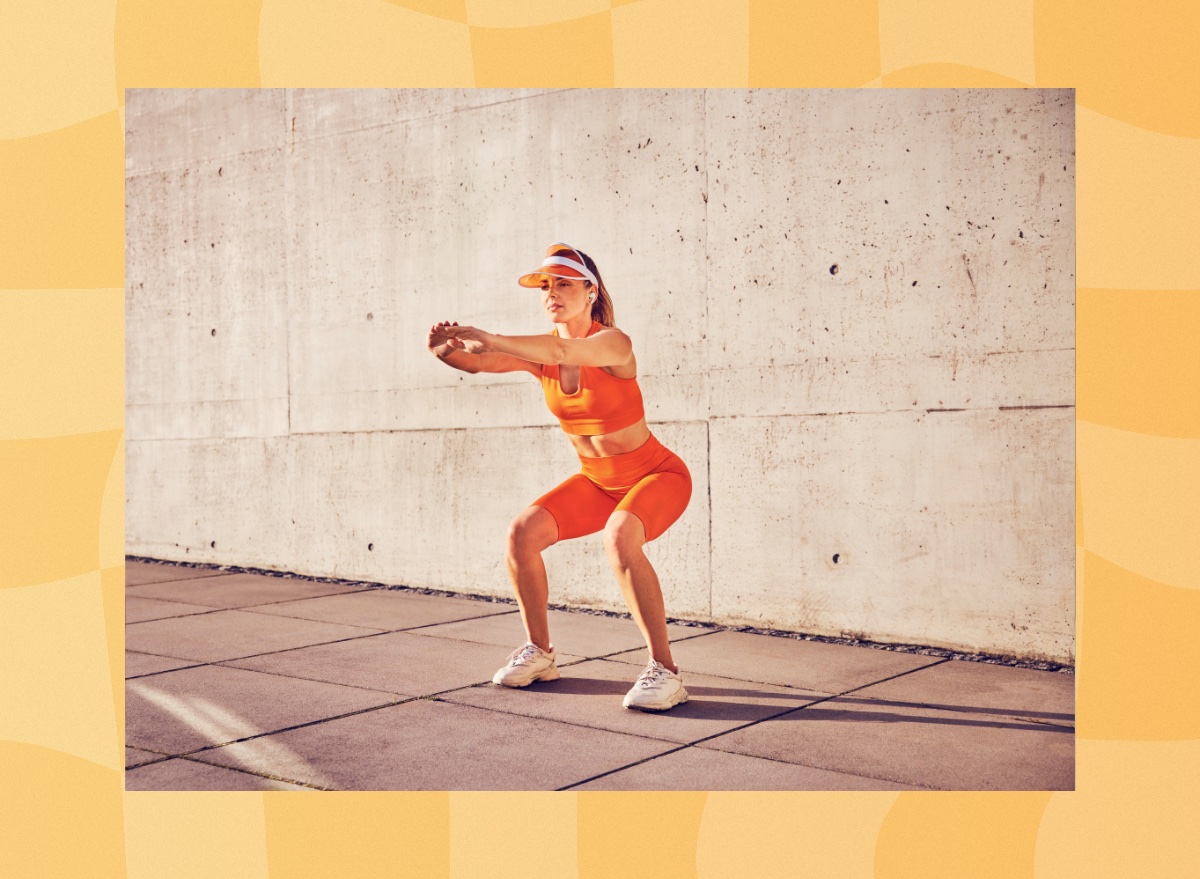
Aging brings on many visible changes—like wrinkles, age spots, and gray hair—but there’s also a lot happening behind the scenes. For instance, muscle mass decreases 3 to 8% every 10 years after the age of 30, and that rate speeds up after 60. In addition, bone density declines, joint stiffness increases, and the likelihood of developing type 2 diabetes, osteoporosis, and heart disease heightens. That’s why it’s essential to continue training your body as you age. To help determine how gracefully you’re aging, we chatted with a fitness pro who outlines six tests that reveal how strong and healthy you are.
The below tests highlight upper-body mobility, lower-body strength, and balance, says Portia Page, CPT, NCPT, PMA, ACE, and AFAA certified, who’s a Pilates guru and Balanced Body Educator.
Single-Leg Stand
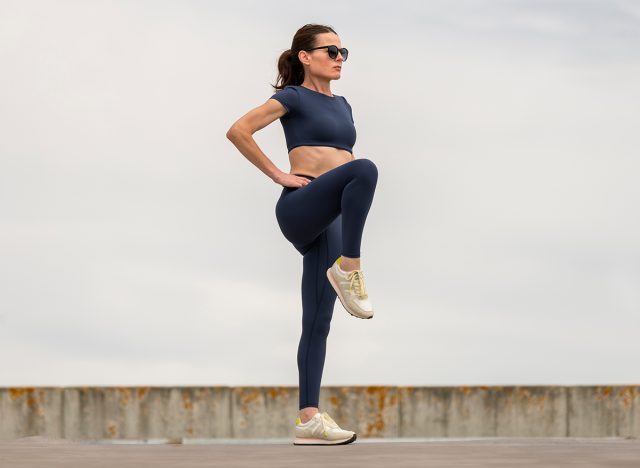
- Start by standing tall.
- Balance on one foot without holding onto support.
- Maintain the single-leg stance for a minimum of 30 seconds.
- Repeat on the opposite side.
Tandem Walk

- Begin walking in a straight line, placing one foot in front of the other, “heel to toe.”
- Aim to complete 10 steps without feeling off-balance.
Shoulder Flexion Test
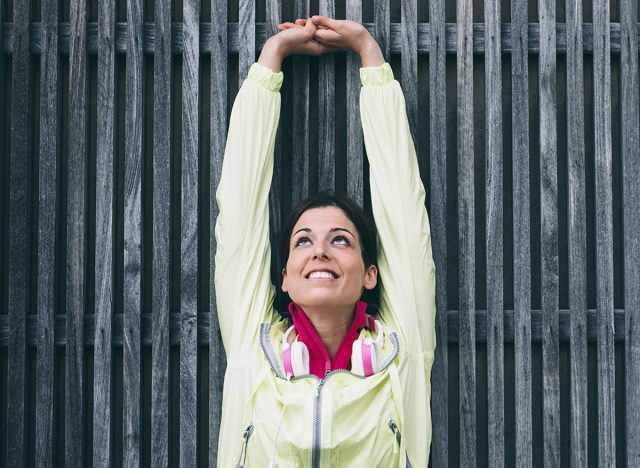
- Stand tall with your back pressed against a wall.
- Lift your arms overhead.
- Aim to touch the wall with the back of your hands. Don’t arch your back.
Scratch Test
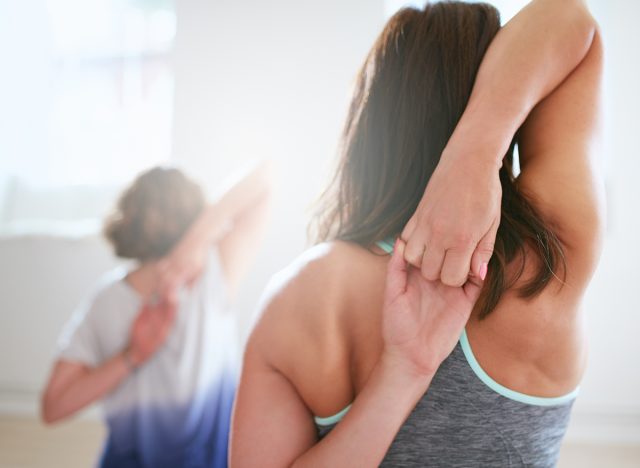
- Reach one arm over your shoulder and then down your back as far as you’re able to.
- Reach your other arm up your back from the bottom.
- Aim to overlap or touch your fingers.
- Repeat on the other side.
RELATED: 10 Best Mobility Drills for Beginners to Improve Flexibility
Squat Test
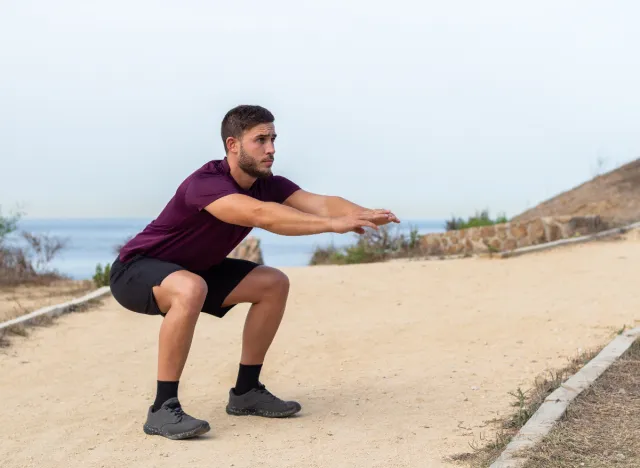
- Stand tall with your feet shoulder-distance apart, toes pointed a bit outward.
- Keep your back straight, chest tall, and arms reaching ahead of you or clasped at your heart’s center.
- Bend your knees, press your hips back, and descend into a squat.
- Lower until your thighs are parallel to the floor.
- Keep your knees lined up with your toes, now allowing them to go beyond the toes.
- Press through your heels to return to standing.
- Perform as many squats as you’re able to while maintaining solid form until fatigue or loss of correct form.
- Or, track the number of squats you’re able to do in a set period of time, such as one minute.
“The squat test assesses muscle strength by evaluating the strength of the major muscles of the lower body. It also assesses muscular endurance based on the number of repetitions,” Page explains. “Regularly performing the squat test can help track changes in lower-body strength over time. If you’re aiming to improve, consider integrating strength training exercises like lunges, leg presses, and additional squats into your fitness routine. Always ensure proper form during the test to avoid injury and ensure accurate results.”
The Plank Hold Test
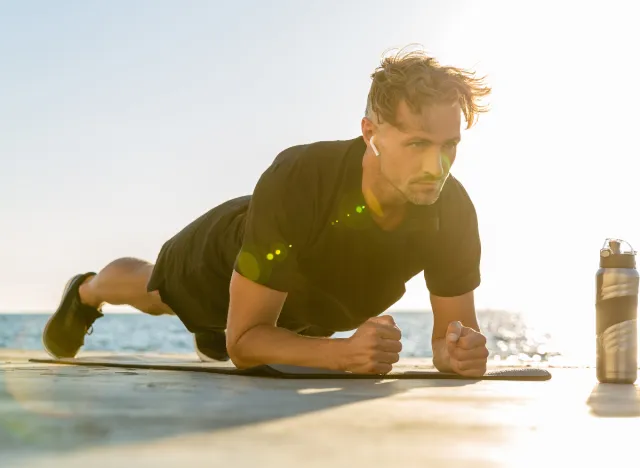
- Start in a forearm plank.
- Position your forearms on the floor with your elbows under your shoulders and your body straight from your head to your heels.
- Activate your legs, glutes, and core.
- Hold the plank with proper form as long as you’re able to.
- Aim for 30 seconds to start out. As you get stronger, increase the plank hold to 1 to 2 minutes or longer.
“The Plank test assesses core strength by targeting the rectus abdominis, obliques, and transverse abdominis muscles,” says Page. “Holding the position challenges muscular endurance. And then the plank also tests your overall stability as it engages the stabilizers in your shoulders, back, and legs. Regularly testing your plank endurance can help gauge improvements in core strength, which is fundamental for overall fitness and injury prevention. If you notice difficulties in maintaining form, consider incorporating core-strengthening exercises like Pilates Mat and/or Reformer into your routine to build endurance and strength gradually.”